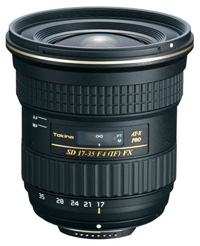Canon’s first 24-70mm zoom with a large maximum aperture.


Canon’s first 24-70mm zoom with a large maximum aperture.

An update that adds image stabilisation to a popular macro lens.

A fast, high-performance ultra-wide angle lens for Canon and Nikon DSLRs with 36 x 24 mm sensors.

A relatively distortion-free, wide-angle 2x zoom lens for Nikon and Canon cameras with 36 x 24 mm sensors.

An ultra-wide zoom lens for digital SLR cameras with both ‘full frame’ and APS-C sized sensors.As is apparent by its name, Sigma’s 12-24mm f/4.5-5.6 II DG HSM is a second-generation product that updates the popular 12-24mm f/4.5-5.6 EX DG ASP HSM that was introduced in 2002. Interestingly, its RRP in Australia is just over $250 lower than the MSRP posted on Sigma Corporation’s US website, which makes this lens excellent value for money for Australians.

A well built standard zoom lens for DSLR cameras with ‘APS-C sized’ sensors.Tamron has tagged its new 17-50mm F/2.8 lens with the ‘SP’ label, indicating Super Performance, which puts it into the professional product category. It also bears the Di II, indicating a second-generation, digitally integrated lens that is designed for use with ‘APS-C sized’ sensors and mounts are available for Canon, Nikon and Sony DSLRs. As tested on a Canon EOS 300D, it covers a field of view equivalent to approximately 27-80mm.

Sigma’s new 18-200mm F3.5-6.3 DC zoom lens is marginally heavier than the similarly-featured Tamron lens we reviewed in issue 25 but also somewhat smaller in size and considerably cheaper. Designed specifically for current DSLR cameras with ‘APS-C’ sized sensors (1.5-2.0 field of view crop), this lens has internal focusing, which prevents the front from rotating, making it ideal for use with angle-sensitive accessories like polarisers and graduated filters.

Digital integration is now available for a popular long-range zoom lens.

This professional quality, mid-range zoom lens has been designed specifically for the ‘APS-C’ sized sensors used in all of Nikon’s DSLR cameras and is quite a different beast from the 18-55mm lens supplied with the D50 camera reviewed in this issue. Covering a picture angle equivalent to 25.5~82.5mm on a 35mm camera, it maintains its fast f2.8 maximum aperture throughout its zoom range, giving it a big advantage over the cheaper optic for photographers who shoot in dim lighting and those who require a high level of depth-of-field control with differential focusing.

Purchasers of Nikon DSLR cameras that come with 18-55mm or 18-70mm lenses will probably want a long zoom to extend their shooting capabilities. The recently-released AF-S DX Zoom-Nikkor 55-200mm f/4-5.6G ED has been designed specifically to meet this need. Available in black or silver (to match the D50), it can be used for subjects as diverse as candid portraits, sports, nature and wildlife photography.
Ads can be a pain, but they are our only way to maintain the server. Please deactive Ads blocker to read the content. Your co-operation is highly appreciated and we hope our service can be worth it.